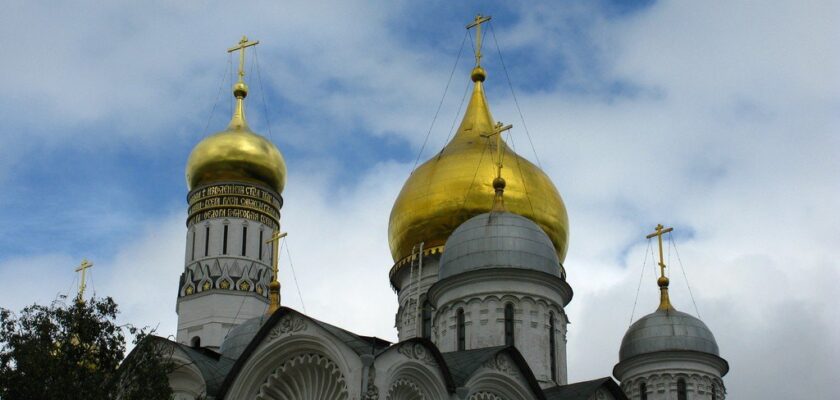Ivan the Great Bell Tower of the Moscow Kremlin
The Ivan the Great Bell Tower (Ivan the Great Bell Tower), which adorns the Cathedral Square of the Moscow Kremlin, is the dominant feature of the medieval architectural complex. In addition to the three-tiered tower itself, the ensemble includes the Dormition Belfry and Filaret’s annex. The bell tower was erected in 1505-1508 according to the plan of the Italian architect Bona Fryazin. In 1600, having received an additional tier of ringing, the bell tower turned into the tallest building in Moscow. This snow-white 81-meter structure did not lose its position until 1883, when the Cathedral of Christ the Savior was built.
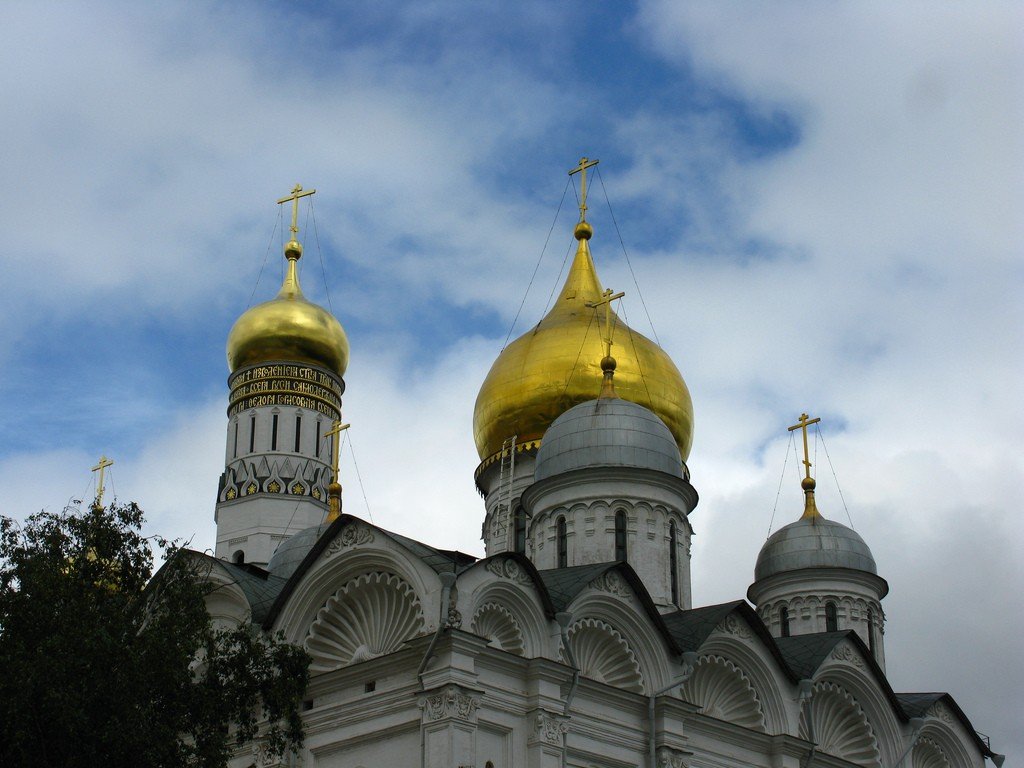
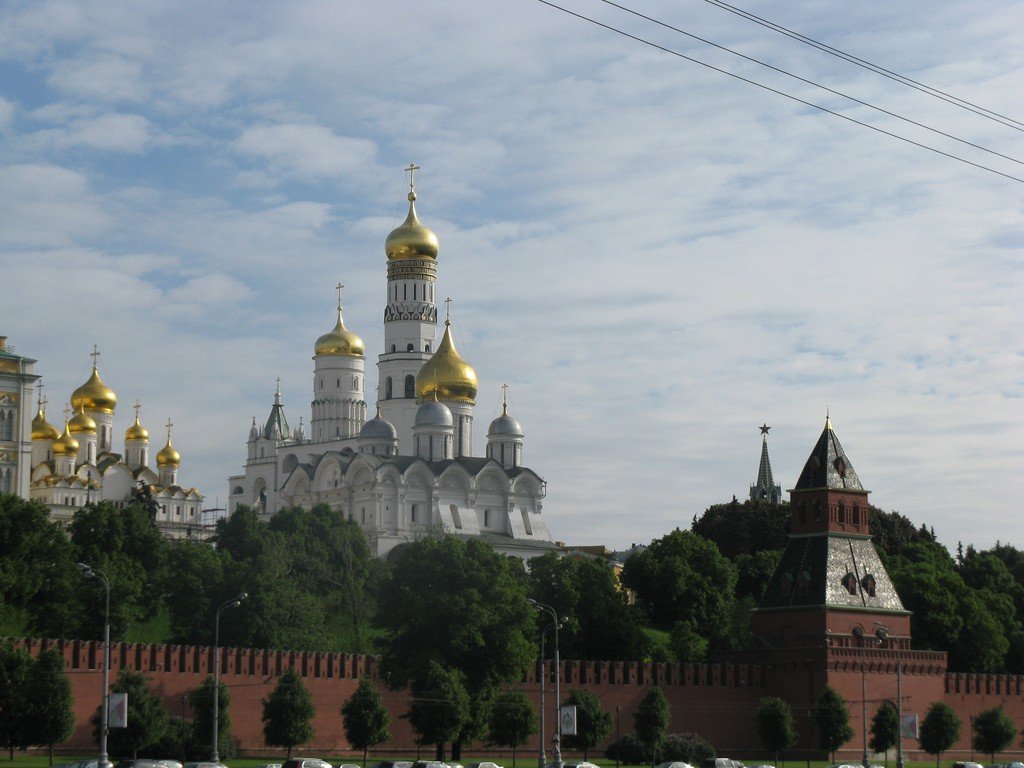
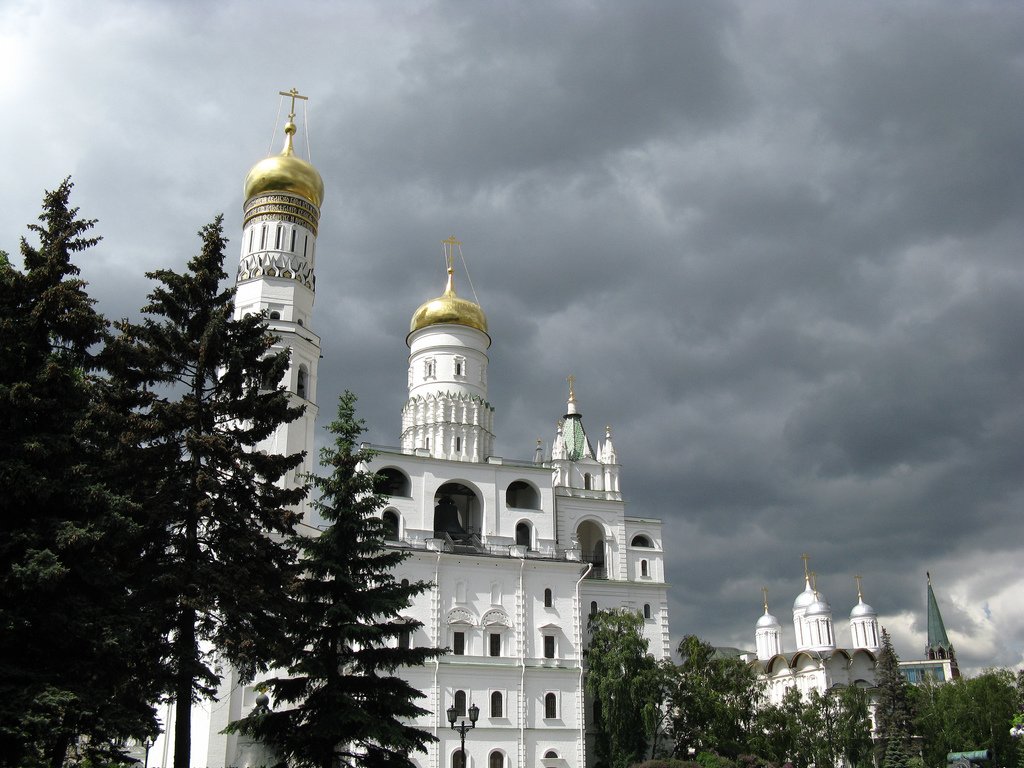
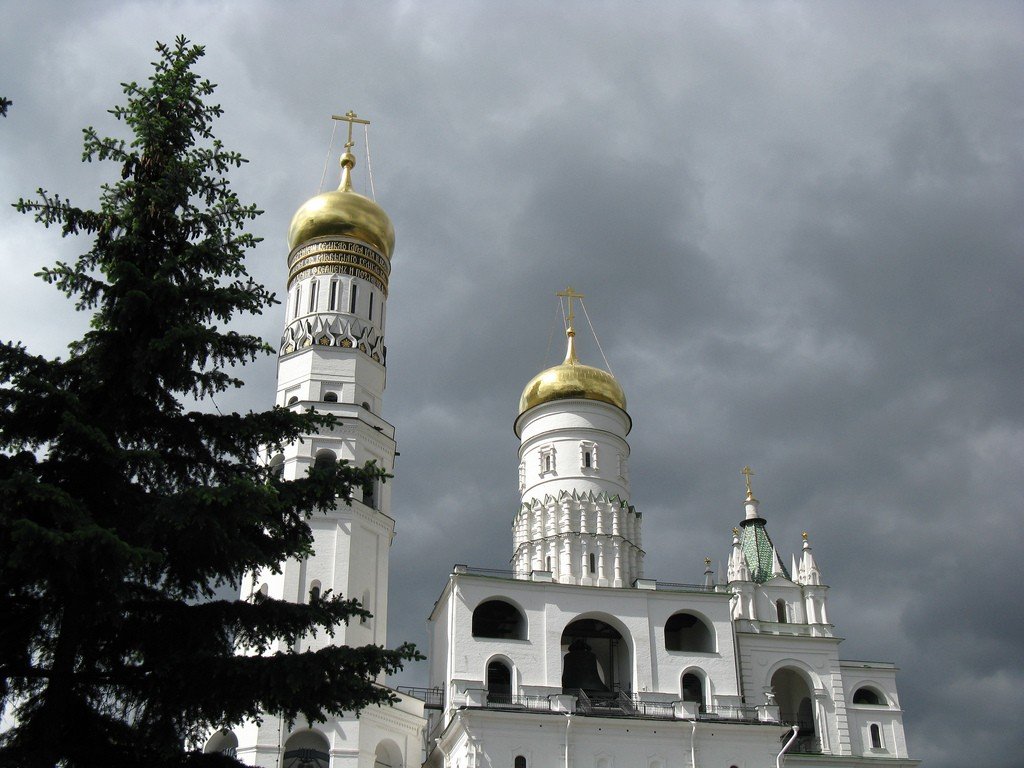
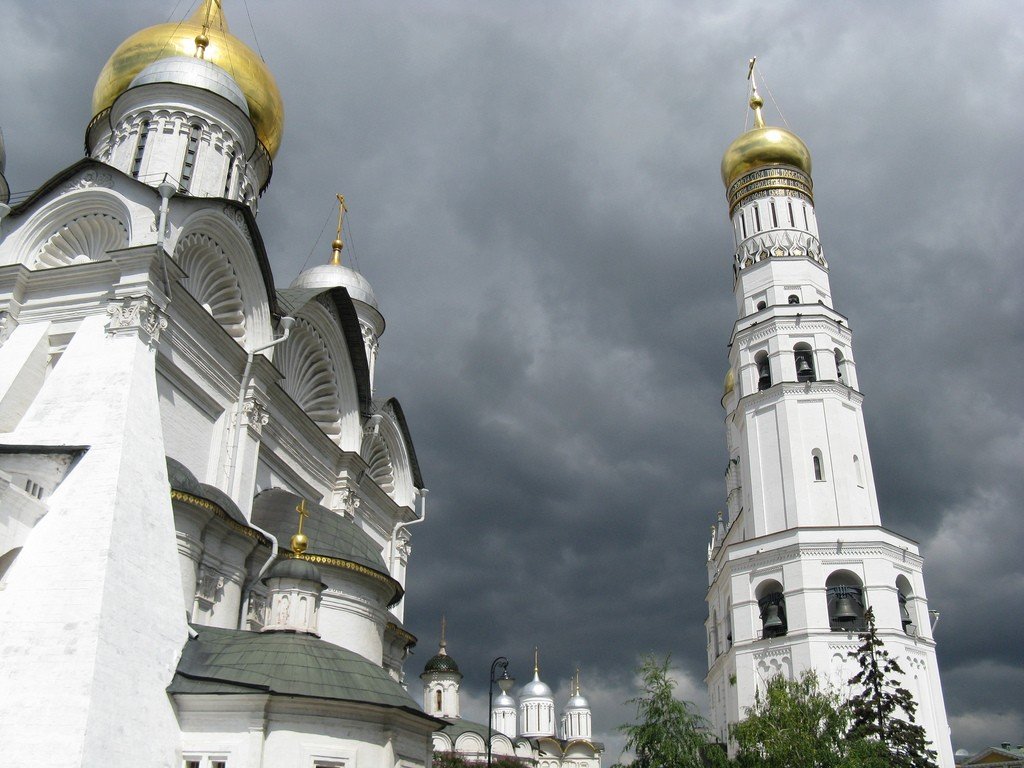
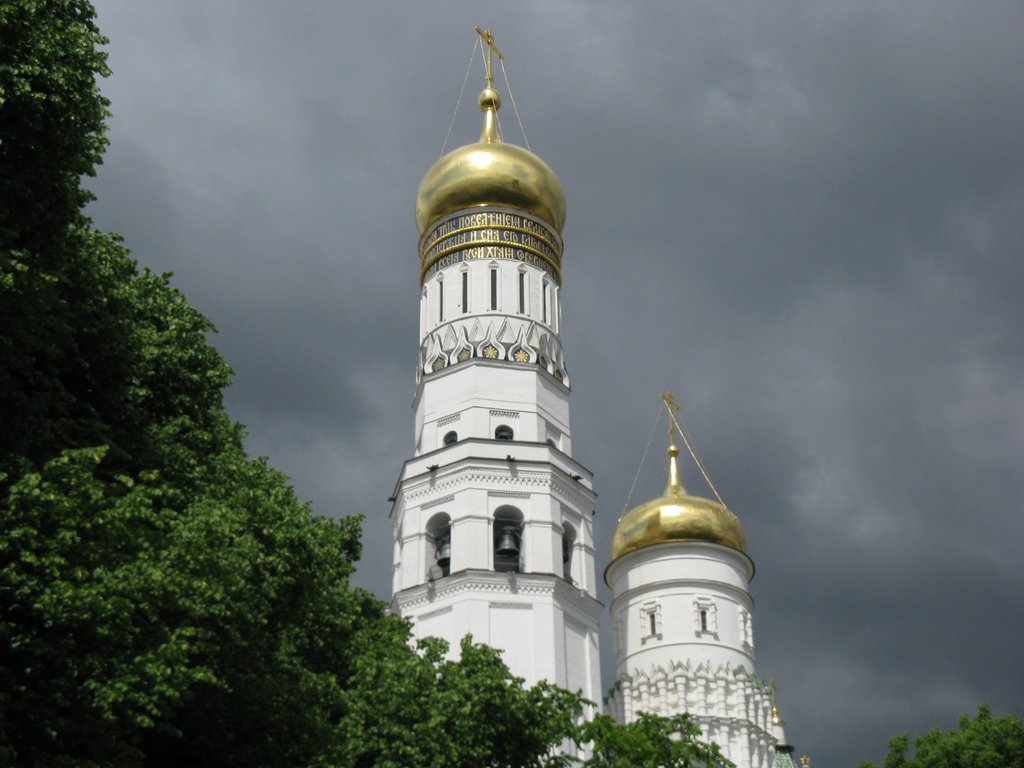
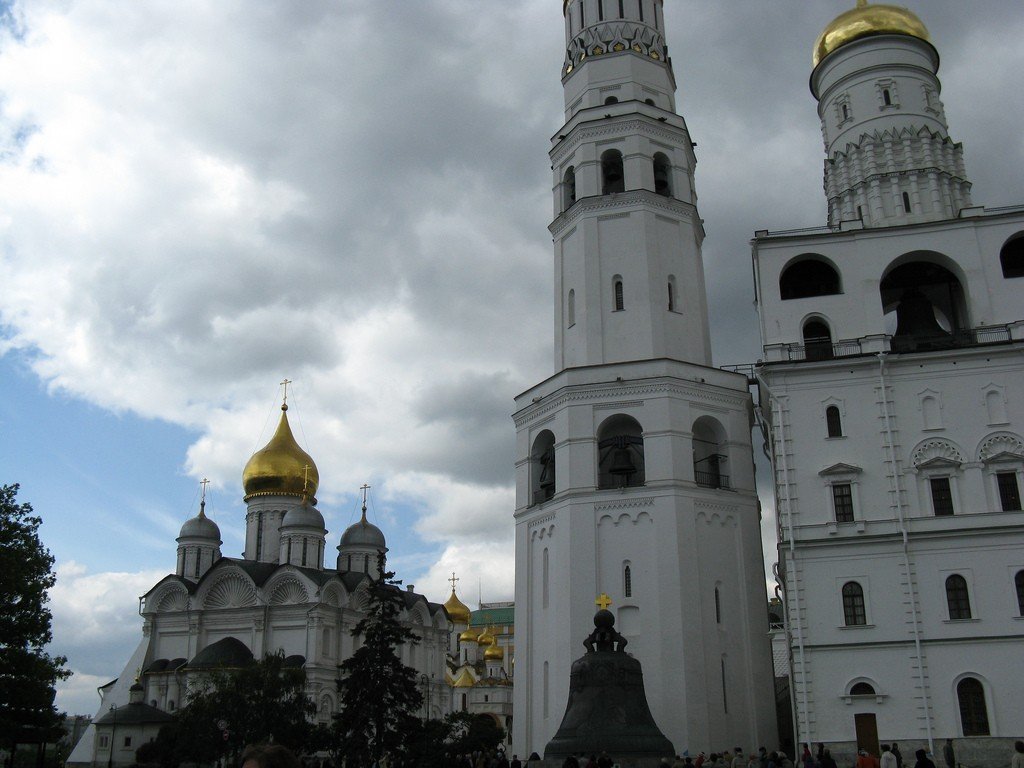
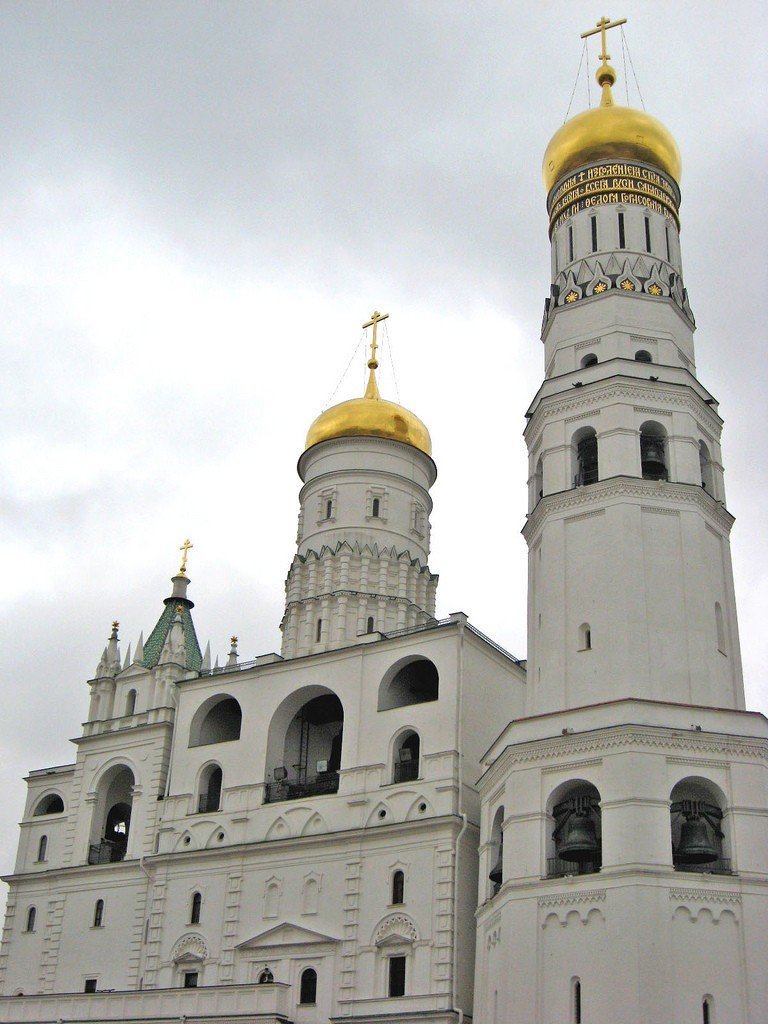
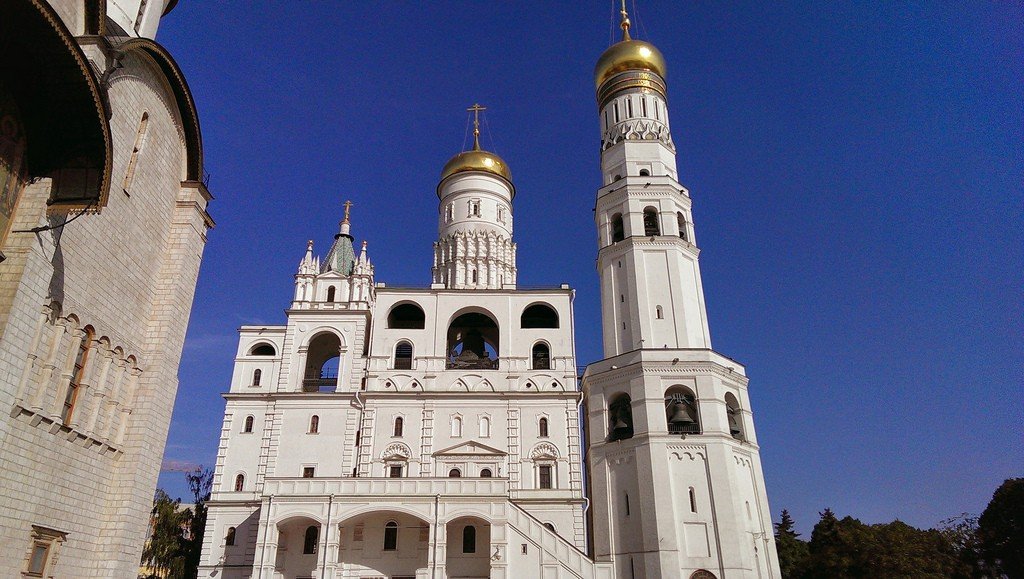
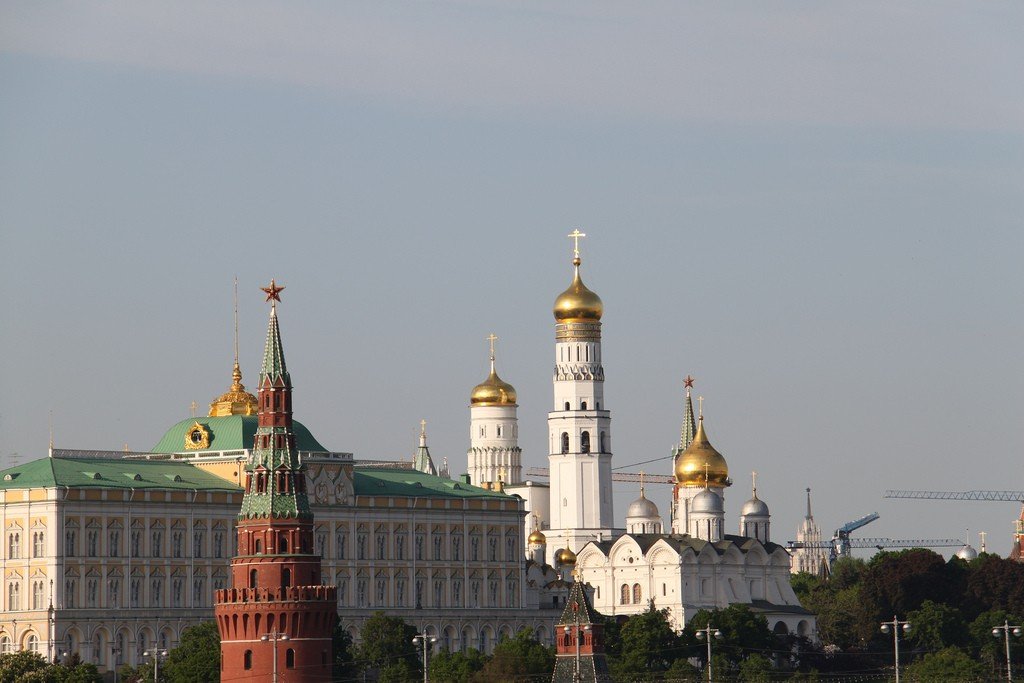
Video: The Bell Tower of Ivan the Great
ContentsHighlights
The Bell Tower of Ivan the Great was erected at the most interesting and productive time for medieval architecture in Moscow – during the reigns of Ivan III, Vasily III, Ivan the Terrible, and Boris Godunov. Then the canons of Russian architecture were enriched and complicated by Italian architects invited to Russia. With its height, graceful silhouette and moderate decoration, the bell tower resembles Italian campaniles, but Bon Fryazin created not a tetrahedral structure, characteristic of similar structures in his homeland, but an octahedral one, paying tribute to the Russian architectural tradition.
.The monumental tower-like structure, which has a slightly pronounced conical shape, surprises with its lightness and slenderness. The tower owes these qualities to the compositional construction of its volumes – each next tier is smaller in diameter and height than the previous one. The thickness of the walls of the first tier of the bell tower is 5 meters, and the second tier is already 2.5 meters. The tiers end with galleries where the bells – remarkable monuments of domestic foundry art of XVI-XVIII centuries – are placed. On the pedestal in front of the bell tower is the Tsar Bell.
.Of the 33 bells in the collection of the Moscow Kremlin Museums, 22 are placed on the tiers of the Ivan the Great Bell Tower, in the openings of the adjoining Assumption Belfry and Filaret’s annex. These buildings, built in the XVI-XVII centuries, were seriously damaged during the retreat of Napoleon’s soldiers from Moscow. Their current appearance with elements of classicism and neo-gothic is the result of restoration work that began after the expulsion of the French from Russia.
.History of the Bell Tower of Ivan the Great
The Bell Tower of Ivan the Great rises on the most prominent place of Borovitsky Hill – where a small church had stood since 1329. It was the first known to us temple of stone “and bells” in Moscow. It was built at the will of Prince Ivan Kalita and dedicated to the namesake of the saint of the Moscow ruler – John the Lestitchnik, a philosopher and theologian from Byzantium.
.In the late XV – early XVI century, a large-scale reconstruction of the Kremlin was carried out, initiated by Prince Ivan III the Great of Moscow. Italian architects and engineers familiar with Renaissance architecture and art were involved in the work. They appeared in Moscow after Ivan III married Sophia Palaeologus, the niece of the last Byzantine emperor, who had been brought up in Rome. In 1505, marked by the death of the prince, the Church of St. John the Apostle was demolished, and to the east of it they began to erect an octagonal bell tower modeled on the Italian campanile tower. The author of the project was an architect nicknamed Bon Fryazin, presumably a native of northern Italy.
.The two-tiered bell tower with a height of 60 meters and in-wall staircases was completed in 1508. Its first tier housed the new church of St. John the Vestryman. Above it an intermediate floor was constructed, above which the lower platform of the bell was arranged. The second, narrower, tier was a slender pedestal to support the next level of bells. The bell platforms were decorated with arched openings.
.The Bell Tower of Ivan the Great became the dominant structure of the ensemble, which included three cathedrals – the Assumption, Archangel and Annunciation cathedrals, which did not have their own belfries. It was also used as an observation point: from the second tier it was convenient to monitor the fires and to notice in time the approach of the enemy to the city. The surrounding area could be seen from here for 25-30 kilometers.
.
In 1532 the architect from Italy Petrok the Small began to erect to the north of the bell tower of the Church of the Resurrection with a platform on which it would be possible to place additional bells. It is known that by the end of the 17th century it was no longer used as a place of worship, but served as a belfry, which was named “Uspenskaya.”
During the reign of Boris Godunov, a superstructure grew over the two-tiered bell tower of Ivan the Great, which served as a drum for the gilded head. Thus, this architectural gem reached its current height. The author of the project of the third tier is presumably the domestic architect Fyodor Kon. The completion of the tower dates back to 1600.
.The harmonious complex of the bell tower was formed by the last decade of the XVII century. At that time Filaret’s annex with a hipped roof was already a part of it. Erected on the recommendation of Patriarch Filaret, it originally served as another belfry to house a large bell.
.
Filaret’s annex and the Dormition Belfry were blown up by the French in 1812. The buildings were reconstructed by 1819, but not in a strictly authentic appearance. The bell tower itself, mined by the retreating invaders, managed to survive, but not miraculously, but due to the unique strength of the supporting structures. This fact confirmed the assumptions of those historians who believed that the architect Bon Fryazin were known to the secrets of military engineering.
.
There is a popular but unconfirmed story about the misadventures of the domed cross of the Ivan the Great bell tower during the stay of the French in Moscow. At that time, the tower housed the occupiers’ chancellery and optical telegraph. Shortly before the historic fire Napoleon ordered to remove the cross. It was said that he wanted to demonstrate that Moscow had fallen, or he simply confused the bell tower with the Annunciation Cathedral, which was rumored to be crowned with a cross made of solid gold. When the looters climbed to the roof of the dome, they were attacked by a flock of crows. While fighting off the birds, the soldiers missed the cross, which they were lowering on a rope, and it crashed to the ground. The debris showed that the cross was only gilded. According to the testimony of a Muscovite, among the hapless “climbers” were two townspeople. They were allegedly shot almost by Napoleon himself, who despised traitors.
.
After the revolution, services in the Church of St. John the Ledstvichnik ceased, and bell ringing was banned in Moscow in 1918. The chime of the Ivan the Great bell tower broke the silence only in 1992, on the Bright Resurrection of Christ. In the 2000s, the historic structure was restored, after which it housed a variety of expositions of the Museum of the History of the Moscow Kremlin.
.Video: Inside the bell tower
What to see
The Ivan the Great Bell Tower was considered an important tourist attraction back in pre-revolutionary Moscow. In the first guidebooks on the city, which began to be published at the end of the XVIII century, travelers were recommended to see this “monument” and climb under its dome. The tour guides at that time were bell ringers, who could always be found near the Tsar Bell. Alexander Pushkin, whose childhood was spent in Moscow, often climbed the bell tower with his uncle Timofey Kozlov. And Mikhail Lermontov claimed that he who had not been to the top of Ivan the Great “has no idea about Moscow.”
.
Today you can climb the bell tower as part of a tour, in good weather. In winter it is closed to the public, and in spring and fall climbing is allowed in the absence of rain and wind. There are 137 steps to the top, and you only need to climb 25 meters. The observation platform, from where you can capture wonderful panoramas, is located in the first tier of bells, at a level corresponding to about 1/3 of the height of the building. In this location there are 6 powerful bells with “low” voices, including “Bear” (7223 kg) and “Swan” (7371 kg), first cast in the 16th century and recast after two centuries by master Semyon Mozhzhukhin.
.On the next tier there are smaller bells – from 820 to 3280 kg. Among them – the oldest of the surviving in the Kremlin: “Korsun”, poured from an older bell in 1559, as well as “Nemchin” in 1550, with elegant floral ornamentation and an inscription in Old German, probably was a war trophy. The last tier accommodated the most miniature bells – from 164 kg.
.
The three largest representatives of the “Ivanovo bell family” can be seen in the openings of the Filaretov annex and the Dormition belfry. The Great Lent (or Seven Hundred, All-Day) bell, cast in 1704 and located in the annex, is distinguished by rich plastic development of relief ornaments in Baroque style, high reliefs of cherubs. It weighs 13,071 kilograms.
.The undisputed leader of the trio of giants is the Assumption Bell (65,320 kg). Some of its other names are “Sunday”, “Festive”, and “Big”. Cast in 1817 from a bell dating back to 1760, it is skillfully decorated with high relief portraits of Emperor Alexander I and members of his family. The Dormition bell hangs in the central aperture of the belfry of the same name. Next to it is the Reut (or Revun), made in 1622 by Andrei Chokhov, the craftsman who cast the Tsar’s cannon.
.
The lower level of the belfry houses the exhibition hall of the Moscow Kremlin Museums, where it is interesting to examine rarities from the Kremlin collection. The well-organized internal space of the Assumption Belfry also allows for traveling exhibitions representing the collections of various domestic and foreign museums.
.
In the Ivan the Great Bell Tower itself, in the lower tier, there is also a museum. Its exposition is devoted to the history of the architectural ensemble of the Kremlin. Here you can see authentic fragments of white stone decoration of the Kremlin buildings that have not survived to us, information about which is kept by ancient chronicles.
.
Practical information
You can see the sights of Sobornaya Square as part of a tour. The program includes, among other things, a visit to two museums, located in the bell tower of Ivan the Great and in the Assumption Belfry. The cost of a full ticket is 500 rubles. Preferential categories of the population are given discounts.
.Having paid 350 rubles, tourists can climb the bell tower and get acquainted with the museum exposition located on the first tier. There are six 45-minute sessions daily, except Thursday. In summer and until September 30, an additional, seventh, session is organized. The maximum number of sightseers is 10 people, children under 14 are not allowed.
It is worth considering: if it suddenly rains, it will be impossible to get inside the bell tower even if you have a ticket. Tickets are sold in the Alexander Garden, near the Kutafya Tower. To buy them, it is better to come to the ticket office early – by 09:00-09:30.
.How to get there
The nearest metro stations to the Ivan the Great Bell Tower are Borovitskaya, Lenin Library, Arbatskaya, Teatralnaya, Ploshchad Revolutsii, and Okhotny Ryad.
.You can also take bus number m5 or 158 to the public transportation stop “Red Square”.
.